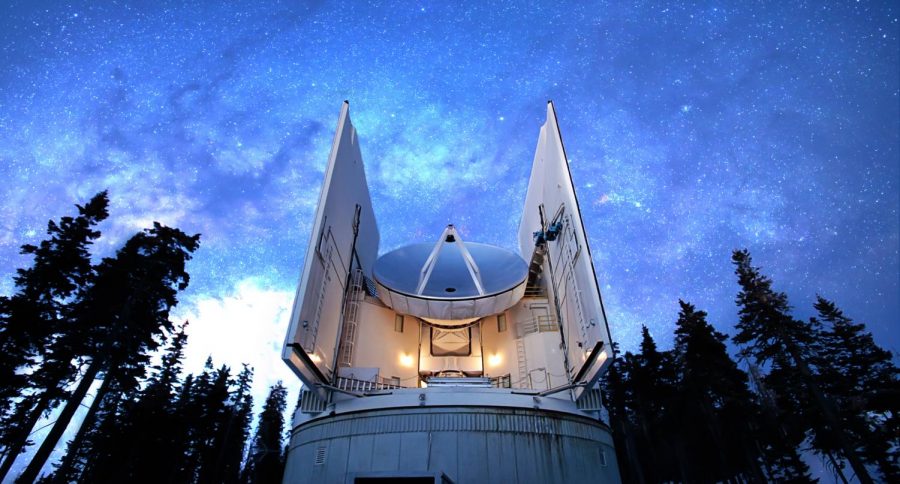Black hole image marks beginning of new technological era
Photo Courtesy of Charles F. Gammie
This telescope captured the picture of the black hole. The image of the black hole was published April 10.
April 22, 2019
With the help of University researchers, the first-ever image of a black hole was published on April 10. Professor in Engineering Charles Gammie and his research team assisted with interpreting the photo.
The team, which he co-led, was involved in the theory working group, Gammie said in an email.
The black hole image is important because it is consistent with models based on Einstein’s theory of gravity and general relativity, Gammie said. This time, a completely new and distinct method from what has been used before was used to acquire the image.
“It’s just cool to see a black hole,” Gammie said.
The image of the black hole was taken by the Event Horizon Telescope Project, an international collaboration aiming to directly observe the environment of a black hole.
Get The Daily Illini in your inbox!
According to EHT’s website, the black hole in the image resides 55 million light-years from Earth and has a mass that is 6.5 billion times larger than the sun.
George Wong, graduate student in Engineering and member of Gammie’s research team, said the scientific community already had an idea of what black holes looked like before they obtained that image, but it is still amazing because people finally have direct visual proof the theories coincide with reality.
Gammie’s research team produced computer simulations of the galaxy M87 and compared the simulations with data. They found the black hole is spinning, and the spin axis of the black hole is pointed away from earth.
“M87 has a powerful, relativistic jet of gas that emerges from close to the black hole. We were able to deduce that the jet is powered by braking of the black hole spin,” Gammie said. “The black hole acts like a giant flywheel with magnetic fields braking the flywheel and transforming the spin energy into luminous electromagnetic jets.”
Wong said one of the team’s most important contributions is the set of theoretical models. The models allowed researchers to ask questions about the broader framework within which the image exists.
Gammie said the work was exciting, but the project also had difficult problems to solve. In addition, members of the team were of different cultures, spoke different languages and lived in various time zones. Because of the international aspect of this project, Gammie said it was sometimes hard for them to have a time that all members could meet together online.
“I was up many mornings at 5 a.m. for meetings and awake late at night finishing up analysis and writing,” Gammie said. “Nevertheless, we were able to all pull together and get it done, and that was very satisfying.”
Wong said one of the most difficult parts of the work was the many parameters researchers needed to take into account for the analysis. One problem was trying to think about what researchers had not yet considered.
Wong said all their work is just the beginning. He said it was important to remember that the achievement represents a new era in technological capability.
“We are already working on producing an image of the black hole at the center of our galaxy, the Milky Way,” Gammie said. “We’ll also soon be able to use other aspects of the data we’ve already taken to figure out which models really work (polarization, in particular). In the future, we’ll use an expanded array of telescopes to get clearer, sharper images.”







